Italy isn’t just a destination—it’s a delicious journey for your taste buds. From the bubbling layers of lasagna in Emilia-Romagna to the creamy spoonfuls of tiramisù in Veneto, every region offers something unforgettable. Whether you’re strolling cobbled streets in Florence or dining cliffside in Positano, these 10 must-try Italian classics showcase the heart of savory tradition, while 9 decadent desserts add the perfect sweet finish. Ready to eat your way through Italy like a local? This list will guide you to the dishes and dolci that make the trip more than worth it—these bites are truly bellissimo.
1. Pizza Napoletana – Naples’ Gift to the World
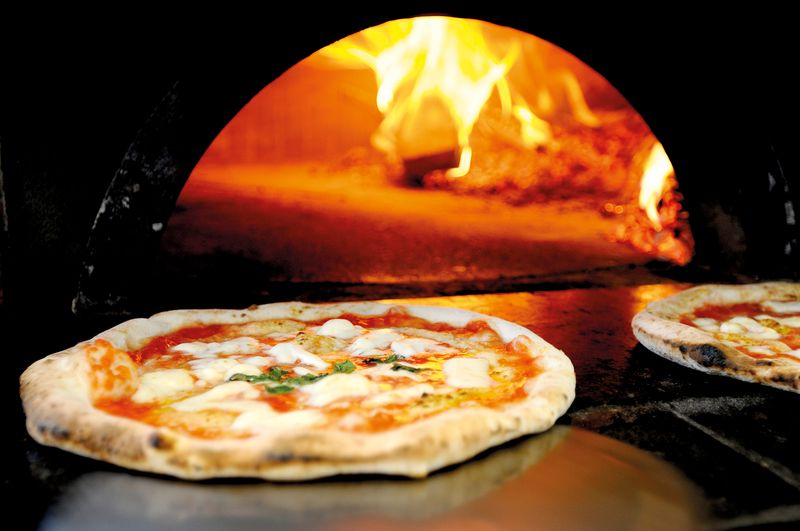
Nothing compares to biting into an authentic Pizza Napoletana in its birthplace. The magic happens in just 90 seconds as wood-fired ovens reaching 900°F transform simple ingredients into culinary perfection.
The pillowy, charred crust provides the perfect canvas for San Marzano tomatoes, which offer a sweetness that commercial varieties can’t match. Topped with creamy fior di latte mozzarella and fresh basil, each bite delivers Italy’s colors and flavors in perfect harmony.
Neapolitan pizza-making is so significant that UNESCO recognized it as an Intangible Cultural Heritage of Humanity in 2017.
2. Risotto alla Milanese – Liquid Gold in a Bowl
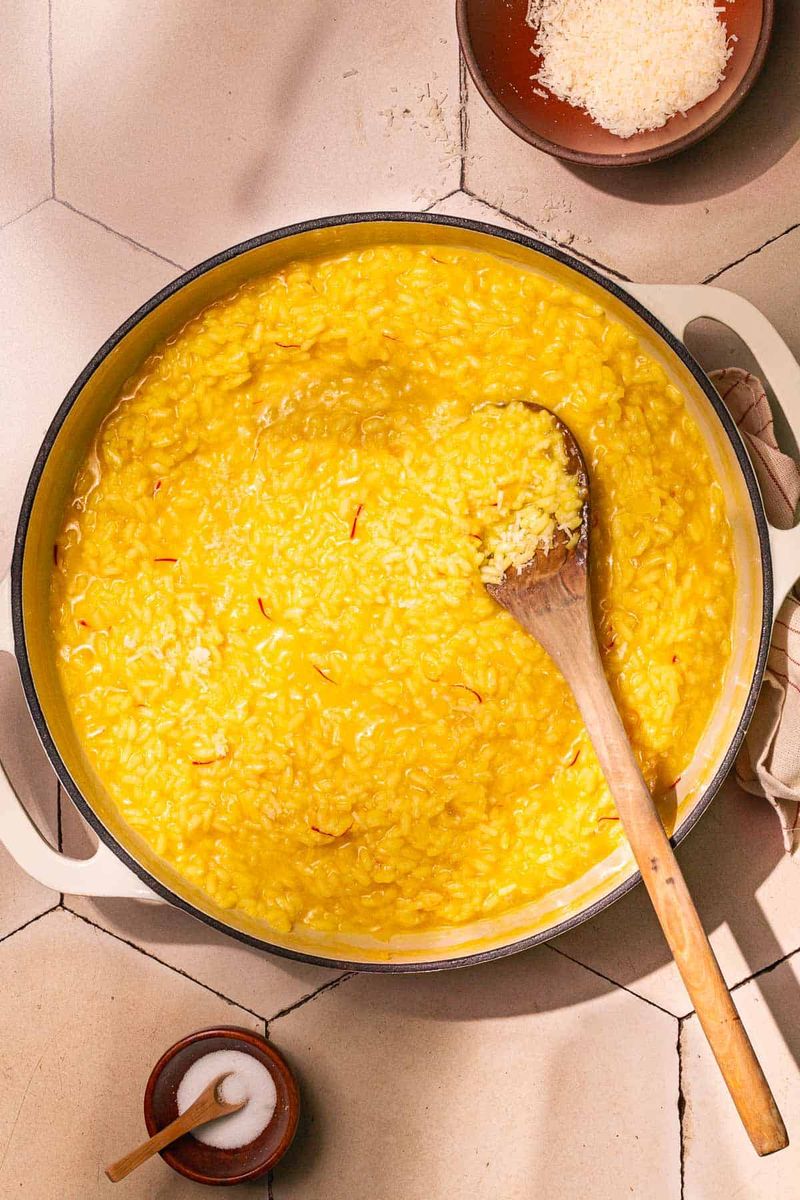
Born in Milan’s sophisticated culinary scene, Risotto alla Milanese transforms humble rice into an opulent experience. The secret lies in the patient, meditative stirring that coaxes starch from each grain, creating that signature creamy texture without a drop of cream.
Precious saffron threads give this dish its distinctive golden hue and subtle floral aroma. The finishing touch—a generous shower of aged Parmigiano-Reggiano and a knob of butter—elevates this northern Italian masterpiece to silky perfection.
Traditionally served alongside ossobuco, this risotto also stands proudly on its own as a first course that showcases Italian cooking’s elegant simplicity.
3. Lasagna alla Bolognese – Emilia-Romagna’s Layered Masterpiece
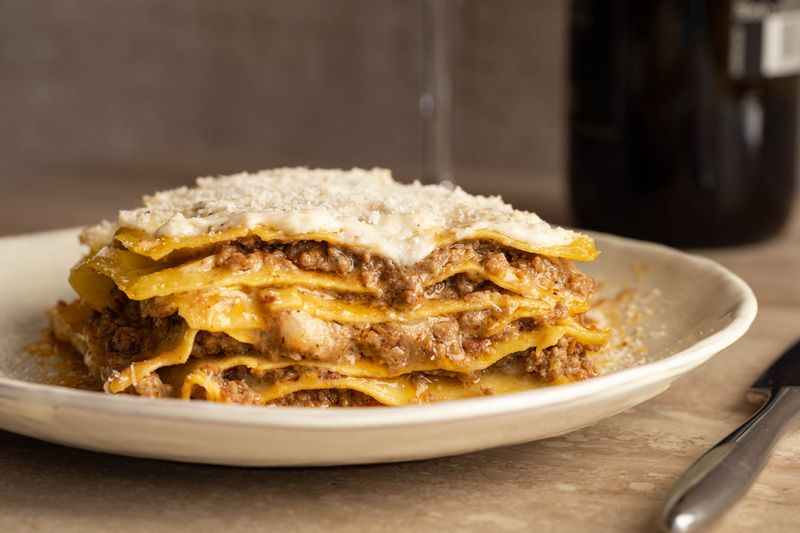
Every forkful of authentic lasagna reveals the soul of Emilia-Romagna cuisine. Unlike American versions, real Bolognese lasagna features delicate sheets of fresh egg pasta that practically melt between layers of slow-cooked ragù.
The meat sauce itself requires hours of patient simmering, allowing beef and pork to develop deep, complex flavors. Velvety béchamel sauce provides creamy richness that perfectly balances the savory meat, while Parmigiano-Reggiano adds nutty sharpness to each heavenly layer.
Sunday lunch in Bologna often centers around this labor-intensive dish, bringing families together over what might be Italy’s ultimate comfort food.
4. Bistecca alla Fiorentina – Tuscany’s Primal Feast
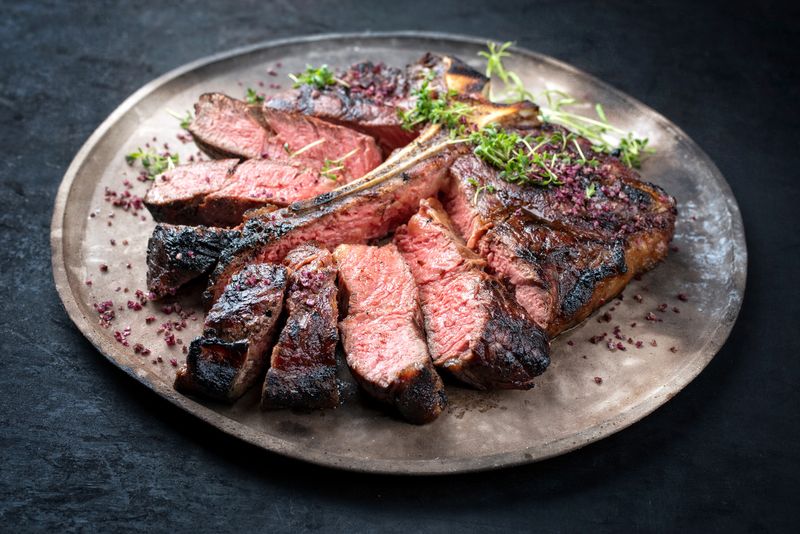
Carnivores make pilgrimages to Florence specifically for this magnificent T-bone steak. Cut from Chianina cattle, these massive portions typically weigh 2-3 pounds and stand 2-3 inches thick – a true celebration of Tuscan beef.
The preparation is stunningly minimalist: just high-quality meat, salt, and perhaps a whisper of olive oil. Cooked over blazing wood coals to a perfect rare interior with a charred crust, the flavor is intensely beefy with mineral undertones that reflect the Tuscan terroir.
Locals insist there’s only one way to enjoy this primal feast – rare – and ordering it well-done might earn you playful scorn from your waiter.
5. Ossobuco – Milan’s Melt-in-Your-Mouth Veal Shanks
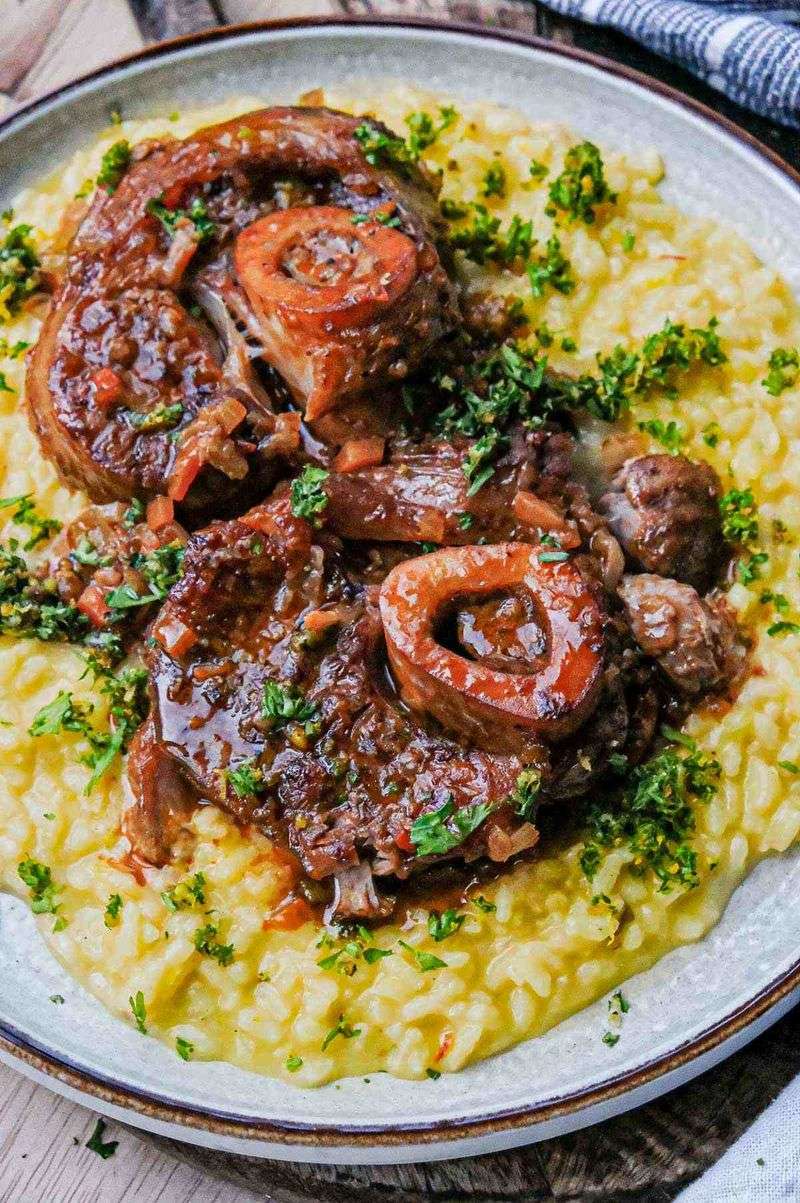
Ossobuco embodies the transformative magic of slow cooking. Veal shanks, once tough and sinewy, surrender into fork-tender submission after hours of gentle braising in white wine and aromatic vegetables.
The star attraction hides inside each cross-cut shank – the marrow, a buttery delicacy that Italians scoop out with special narrow spoons. A bright gremolata (lemon zest, garlic, and parsley) cuts through the richness, awakening the palate with each bite.
While traditionally served atop saffron risotto, many Milanese restaurants now offer it with creamy polenta, creating the perfect vehicle for capturing every drop of the precious sauce.
6. Spaghetti alla Carbonara – Rome’s Silky Egg and Pork Pasta
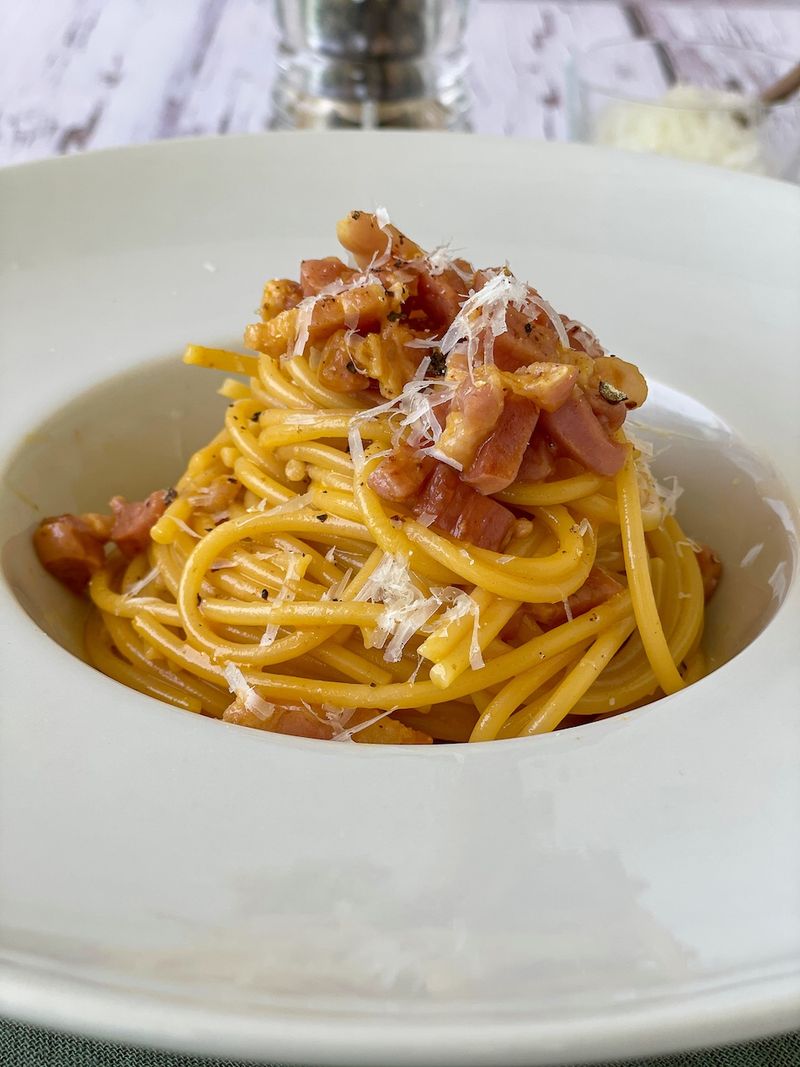
Romans fiercely defend carbonara’s simplicity against international modifications. Authentic versions contain just four ingredients: pasta, guanciale (cured pork jowl), Pecorino Romano, and eggs – never cream or garlic!
The magic happens when hot pasta meets egg yolks, creating a silky sauce that clings to each strand. Guanciale renders its fat during cooking, infusing the dish with a porky richness that bacon can’t replicate. Freshly cracked black pepper adds the final punch.
Though its origins remain debated (some link it to American soldiers bringing bacon and eggs to post-WWII Rome), carbonara today stands as a testament to how humble ingredients can create extraordinary flavor.
7. Arancini – Sicily’s Golden Crispy Rice Treasures
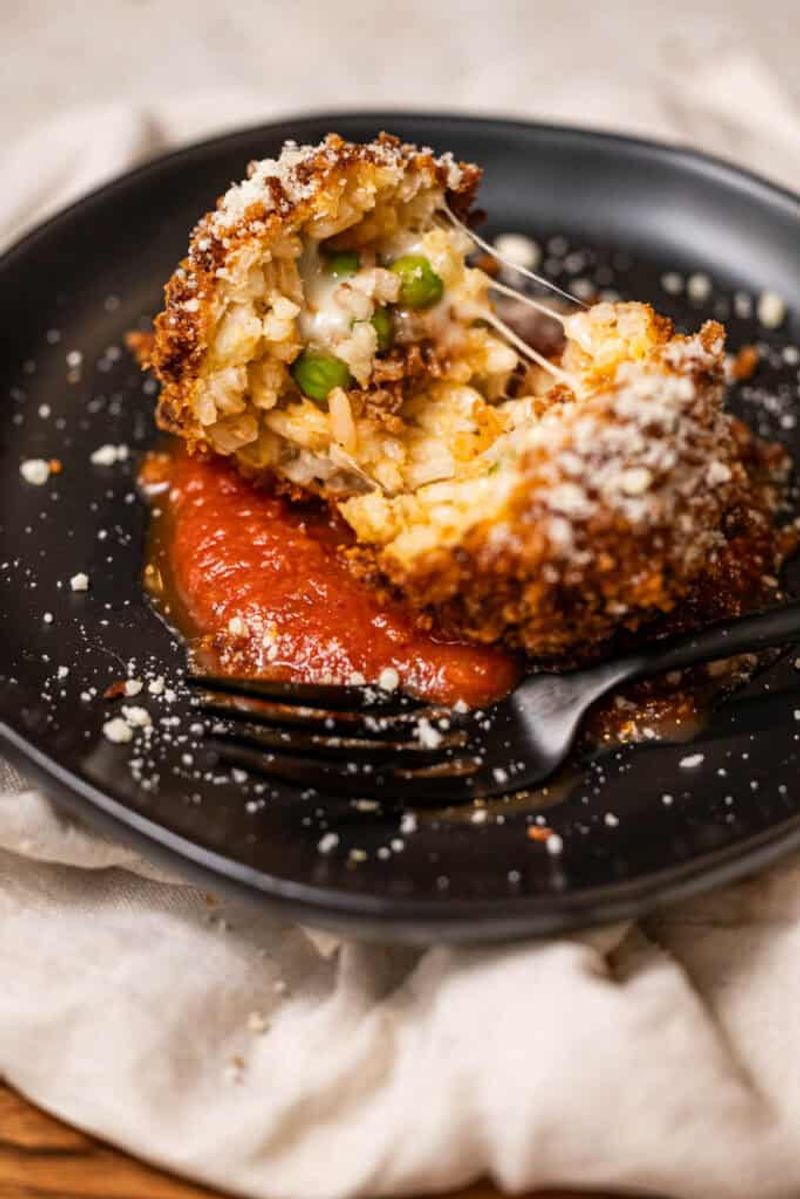
These golden orbs of fried risotto are Sicily’s most beloved street food. Shaped like little oranges (hence the name “arancini,” meaning “little oranges”), their crispy exterior gives way to a steamy, savory interior that delights with each bite.
Traditional fillings include meat ragù with peas, but regional variations showcase everything from eggplant to pistachio cream. The best arancini achieve perfect textural contrast: shatteringly crisp exteriors, creamy rice middles, and a molten cheese center that stretches dramatically when pulled apart.
Found in every Sicilian bakery and street corner, these portable treasures sustained workers long before “fast food” existed, providing a complete meal in a handheld package.
8. Gnocchi di Patate – Pillowy Potato Dumplings
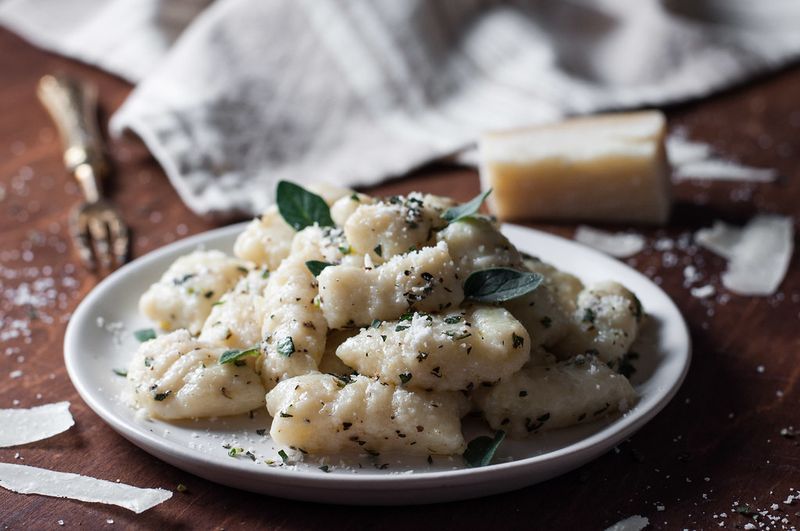
Italian grandmothers judge cooking prowess by one’s ability to make proper gnocchi – those cloud-like potato dumplings that should float in boiling water and melt on the tongue. The technique requires a delicate touch; overwork the dough and you’ll end up with chewy little hockey pucks.
Regional preparations vary wildly across Italy. In Lombardy, they’re bathed in sage-infused brown butter. Ligurians toss them with vibrant pesto, while in Veneto, they might swim in duck ragù.
Italian tradition dictates eating gnocchi on Thursdays, a custom dating back centuries when peasants needed sustenance before Friday’s religious fasting.
9. Caponata – Sicily’s Sweet and Sour Eggplant Masterpiece
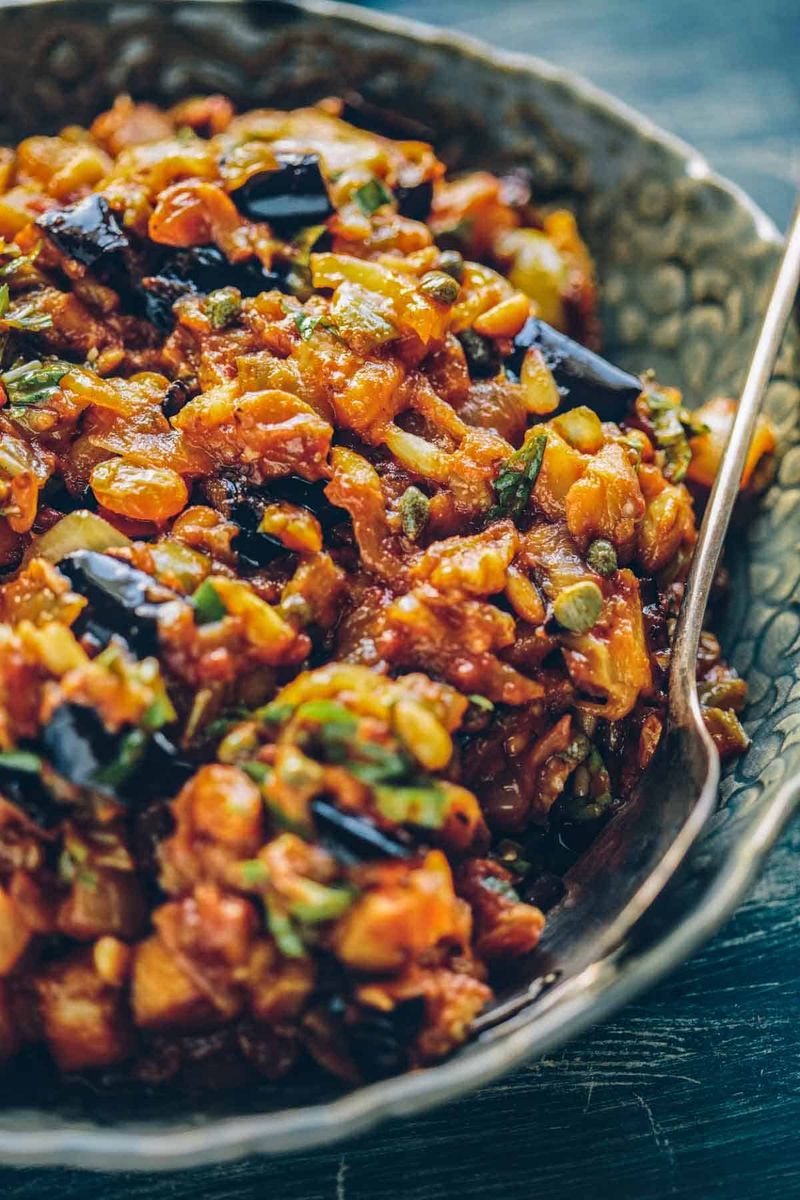
Caponata captures Sicily’s complex cultural heritage in a single dish. Arab influences brought agrodolce (sweet-sour) cooking techniques, while local ingredients create a distinctly Mediterranean profile.
Eggplant forms the silky base, soaking up olive oil and mingling with celery’s crunch, olives’ brininess, and capers’ floral tang. The vinegar-sugar balance creates an addictive flavor that deepens as it sits – most Sicilians insist it tastes better the next day.
Served at room temperature as an antipasto or side dish, caponata showcases Sicilians’ genius for transforming humble vegetables into something extraordinary. The countless regional variations (some add peppers, others pine nuts) reflect family traditions passed through generations.
10. Polenta – Northern Italy’s Comforting Cornmeal Canvas
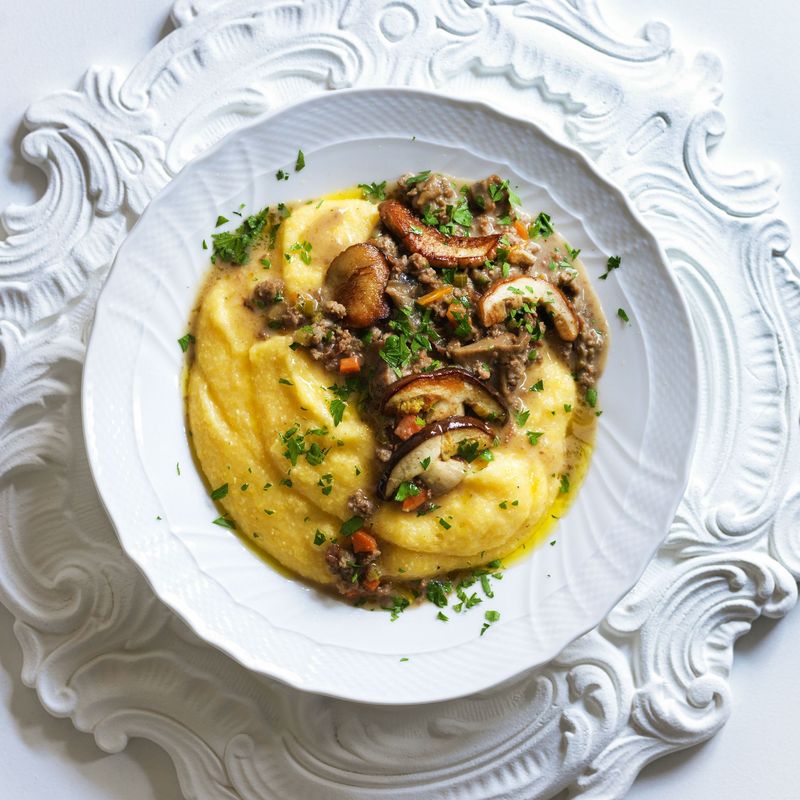
Before pasta dominated Italian cuisine, polenta sustained northern Italians through harsh Alpine winters. This humble cornmeal porridge, once considered peasant food, has evolved into a versatile canvas for showcasing seasonal ingredients.
Proper polenta requires patience – traditionally stirred continuously for up to an hour in a copper pot to achieve silky smoothness. The reward is a warming dish that can be served creamy like mashed potatoes or cooled, sliced, and grilled until crispy.
In Veneto, you’ll find it topped with rich game stews, while Lombardy pairs it with mushrooms and melted cheese. Each spoonful offers comfort that has sustained Italian families for centuries.
11. Tiramisù – Coffee-Soaked Layers of Pure Bliss
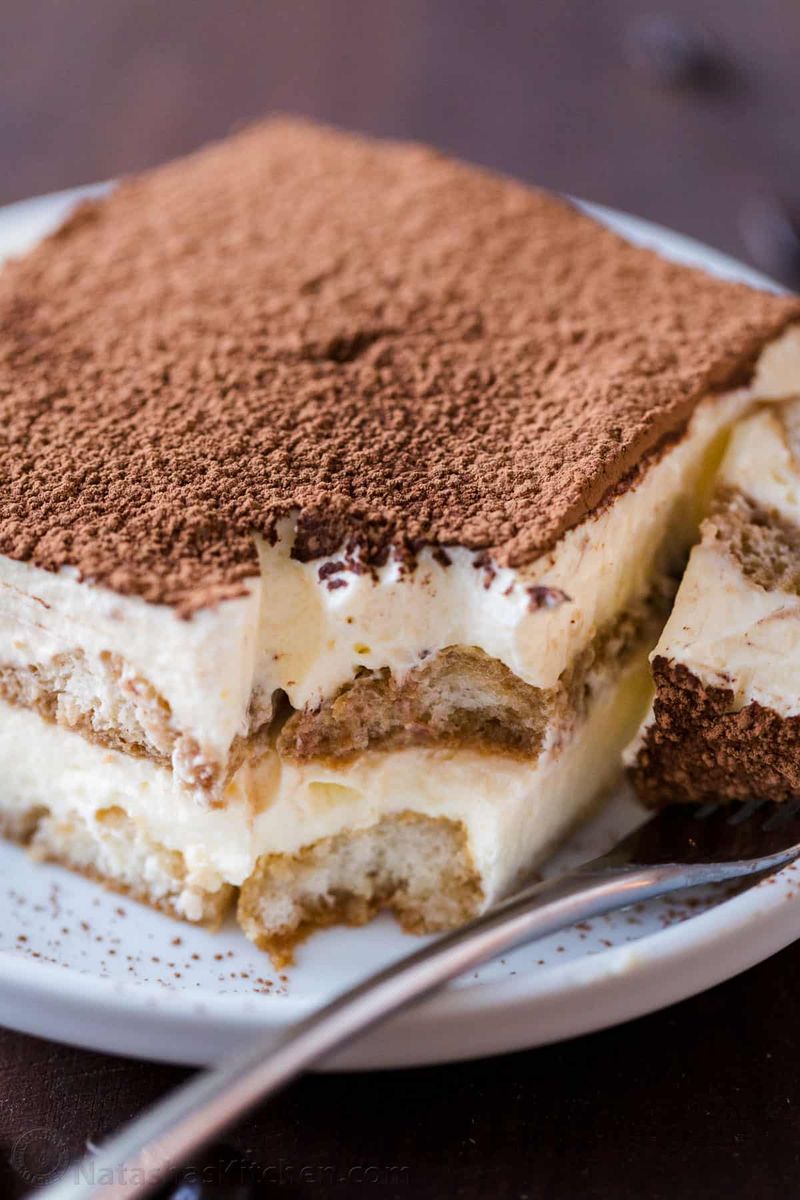
Italy’s most famous dessert translates to “pick me up” – fitting for this espresso-infused creation. Though relatively modern (likely created in the 1960s in Veneto), tiramisù has become the ambassador of Italian sweets worldwide.
The magic lies in its textural contrast: feather-light mascarpone cream against coffee-softened ladyfingers that maintain just enough structure. The subtle bitterness of cocoa powder balances the sweetness, while a hint of marsala wine adds complexity to authentic versions.
Despite its elegant appearance, tiramisù remains surprisingly uncomplicated to prepare. This accessibility, combined with its make-ahead nature, explains why it has conquered dessert menus far beyond Italian borders.
12. Cannoli – Sicily’s Crispy Tubes of Sweet Ricotta

These iconic pastries originated during Sicily’s Arab rule, evolving from harem treats to Carnival indulgences to year-round delights. The name “cannoli” comes from the river reeds once used as molds for the tubular shells.
True Sicilian cannoli maintain a perfect textural contrast: shattering-crisp pastry shells that give way to velvety sweet ricotta filling. Traditionalists insist shells must be fried with lard for proper blistering, while the filling should use sheep’s milk ricotta for authentic tanginess.
Modern versions incorporate chocolate chips, pistachios, or candied orange, but purists in Palermo might simply dust the ends with powdered sugar or crushed pistachios.
13. Panna Cotta – Northern Italy’s Silky Cream Dessert
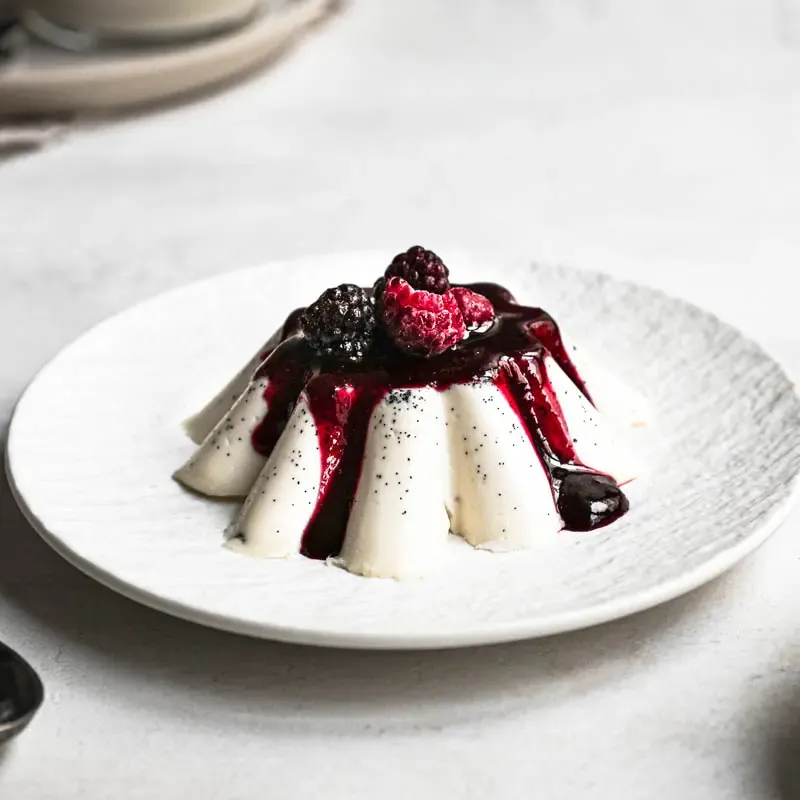
Despite its sophisticated reputation, panna cotta (literally “cooked cream”) began as humble Piedmontese farmhouse fare. Dairy-rich northern regions transformed leftover cream into this delicate dessert using just enough gelatin to achieve a wobble that pastry chefs describe as “the perfect kiss.”
The beauty lies in its simplicity – just cream, sugar, and vanilla, with perhaps a whisper of lemon zest. Modern versions might incorporate everything from coffee to saffron, but traditionalists prefer it unadorned or with a simple berry coulis.
The test of perfect panna cotta is its texture – firm enough to hold shape when unmolded but trembling with the slightest touch of a spoon.
14. Gelato – Italy’s Creamy Frozen Masterpiece

Gelato isn’t simply Italian ice cream – it’s a completely different frozen experience. Made with more milk than cream and churned more slowly with less air, gelato delivers more intense flavor and a denser, silkier texture than its American cousin.
Artisanal gelaterias pride themselves on using seasonal ingredients and natural flavors. Pistachio should be grayish-green (not bright green), fruit flavors should change with the seasons, and fior di latte showcases the pure essence of sweet cream without vanilla masking the dairy’s quality.
True gelato artisans serve from metal tins (not fluffy mountains in display cases) and offer spade-shaped tasting spoons for sampling their daily creations.
15. Zabaglione – The Airy Custard of Northern Tradition

This cloud-like dessert showcases Italian culinary alchemy at its finest. Using just egg yolks, sugar, and Marsala wine, skilled hands transform these humble ingredients into a warm, frothy custard that tastes far greater than the sum of its parts.
The technique demands attention – constant whisking over gentle heat creates tiny air bubbles that give zabaglione its characteristic lightness. The sweet fortified wine adds complexity without overwhelming the delicate egg flavor.
While modern restaurants might serve it chilled in elegant glasses, traditionalists enjoy it warm, spooned over fresh berries or biscotti. Some northern Italian families still prepare it as a strengthening breakfast for children or as a restorative for those recovering from illness.
16. Cassata – Sicily’s Celebratory Sweet Masterpiece

Cassata embodies Sicily’s multicultural history in edible form. Arab sugar-crafting techniques, Spanish candied fruits, and local ricotta combine in this spectacular dessert that’s still the centerpiece of Sicilian celebrations.
A sponge cake shell soaked in liqueur cradles sweetened sheep’s milk ricotta studded with chocolate chips and candied fruit. The entire creation gets encased in almond paste, then covered with vibrant green icing and elaborate decorations that showcase the pastry chef’s artistic skills.
Originally an Easter specialty, cassata now appears at weddings and holidays year-round. Each bakery guards its recipe jealously, with families traveling across town to obtain their favorite version for special occasions.
17. Semifreddo – The Elegant Half-Frozen Delight
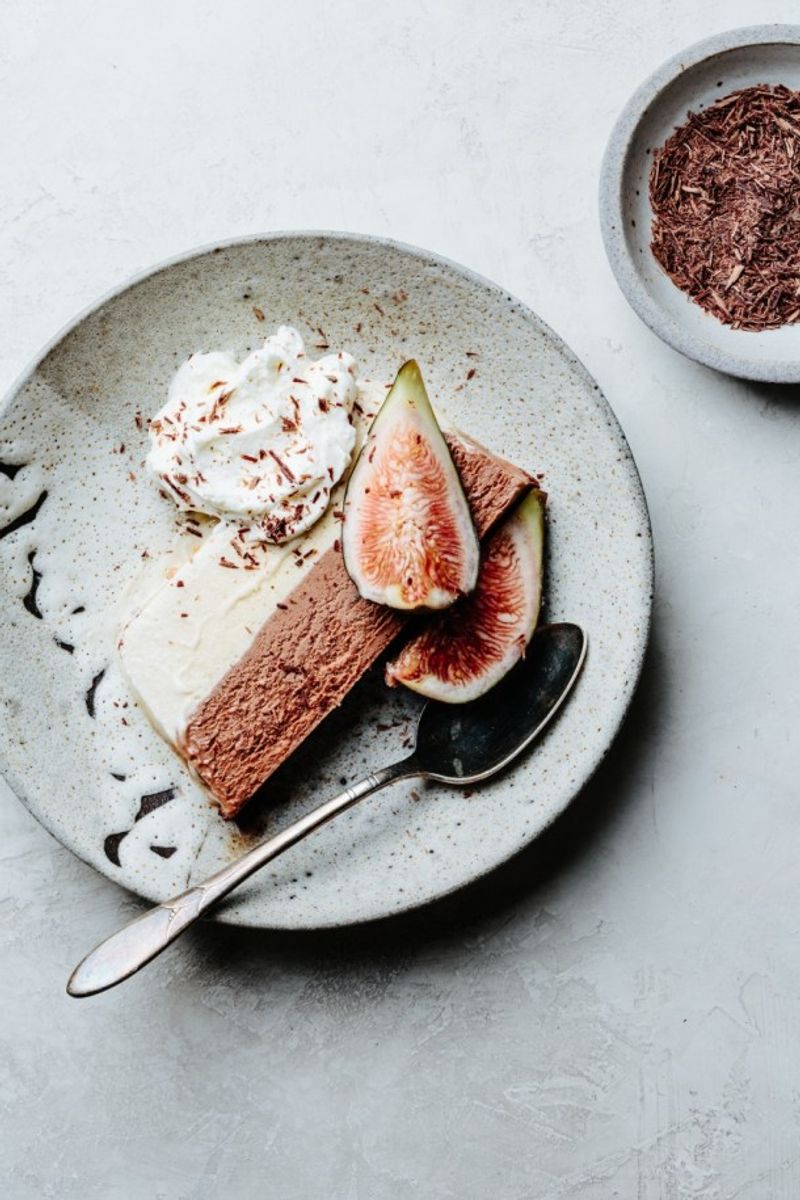
Before modern freezers, semifreddo (“half-cold”) offered Italians a way to enjoy frozen desserts without ice cream’s technical challenges. This velvety creation falls somewhere between mousse and ice cream, maintaining a perfect texture straight from the freezer.
The secret lies in its structure – whipped cream folded with Italian meringue and flavored base creates microscopic air pockets that prevent it from freezing solid. When sliced, it holds its shape while melting luxuriously on the tongue.
Modern pastry chefs experiment with endless flavor combinations, but classics like chocolate, hazelnut, and coffee remain beloved throughout Italy. Often molded in loaf pans and sliced to reveal beautiful layers, semifreddo makes an impressive finale to any meal.
18. Chiacchiere – Carnival’s Crispy Fried Ribbons

During Carnival season, Italian bakery windows fill with mountains of these crispy, air-light pastries. Known by different names across Italy – chiacchiere (gossips) in the south, frappe in Rome, crostoli in Veneto – these twisted ribbons of fried dough connect Italians to centuries-old pre-Lenten traditions.
The simple dough of flour, eggs, and wine or grappa gets rolled paper-thin, cut into strips, twisted into bows, then flash-fried until bubbled and golden. A final snowfall of powdered sugar completes these irresistible treats that shatter delicately between your teeth.
Grandmothers still prepare these by the hundreds before Lent begins, filling homes with the distinctive aroma of frying dough and sweet memories.
19. Torta della Nonna – Tuscany’s Beloved Custard Tart

Translating to “Grandmother’s Cake,” this homestyle dessert embodies the rustic elegance that defines Tuscan baking. A buttery shortcrust pastry cradles velvety lemon-scented custard, while a matching pastry lid studded with pine nuts creates its signature appearance.
Unlike fancier Italian pastries, Torta della Nonna celebrates simplicity. The custard contains just milk, eggs, sugar, and lemon zest – no chocolate or liqueurs to mask the pure, clean flavors. The finishing touch of pine nuts adds subtle resinous notes and textural contrast.
Found in every Tuscan bakery and family kitchen, this unpretentious tart reminds Italians that the most memorable desserts often come from grandmother’s recipes rather than professional pastry shops.
Leave a comment